
Ceiling and wall solutions company Armstrong World Industries (NYSE: AWI) reported Q3 CY2025 results beating Wall Street’s revenue expectations, with sales up 10% year on year to $425.2 million. The company expects the full year’s revenue to be around $1.63 billion, close to analysts’ estimates. Its non-GAAP profit of $2.05 per share was 1.3% above analysts’ consensus estimates.
Is now the time to buy Armstrong World? Find out by accessing our full research report, it’s free for active Edge members.
Armstrong World (AWI) Q3 CY2025 Highlights:
- Revenue: $425.2 million vs analyst estimates of $421.7 million (10% year-on-year growth, 0.8% beat)
- Adjusted EPS: $2.05 vs analyst estimates of $2.02 (1.3% beat)
- Adjusted EBITDA: $148 million vs analyst estimates of $152.1 million (34.8% margin, 2.7% miss)
- The company slightly lifted its revenue guidance for the full year to $1.63 billion at the midpoint from $1.62 billion
- Management raised its full-year Adjusted EPS guidance to $7.50 at the midpoint, a 3.8% increase
- EBITDA guidance for the full year is $558 million at the midpoint, in line with analyst expectations
- Operating Margin: 27.6%, down from 28.8% in the same quarter last year
- Free Cash Flow Margin: 28.9%, up from 19.9% in the same quarter last year
- Market Capitalization: $8.77 billion
“Today we announced record-setting, third-quarter net sales and earnings with strong Mineral Fiber Average Unit Value (AUV) performance, a second consecutive quarter of Mineral Fiber volume growth, and double-digit net sales growth in Architectural Specialties. These results were driven by solid operational and commercial execution across our enterprise that allowed us to overcome lingering market softness and some timing-related cost headwinds,” said AWI President and CEO, Vic Grizzle.
Company Overview
Started as a two-man shop dating back to the 1860s, Armstrong (NYSE: AWI) provides ceiling and wall products to commercial and residential spaces.
Revenue Growth
A company’s long-term performance is an indicator of its overall quality. Any business can have short-term success, but a top-tier one grows for years. Over the last five years, Armstrong World grew its sales at an impressive 11.1% compounded annual growth rate. Its growth surpassed the average industrials company and shows its offerings resonate with customers, a great starting point for our analysis.
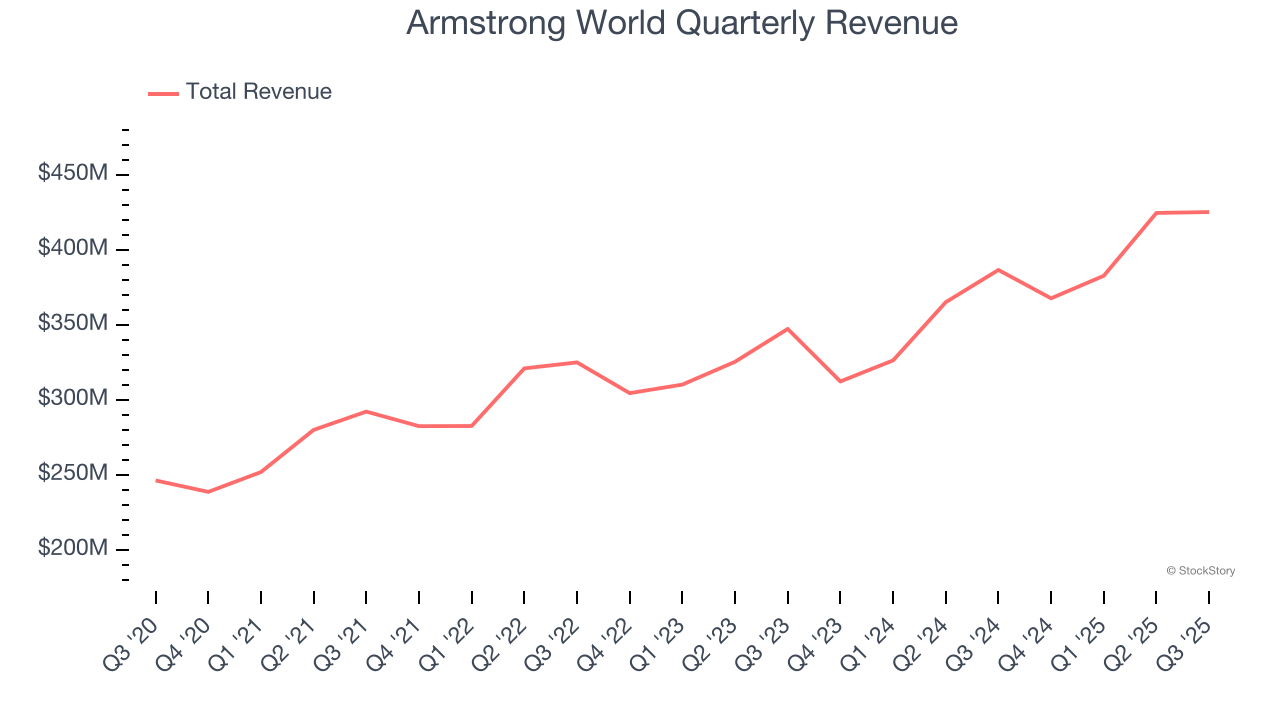
We at StockStory place the most emphasis on long-term growth, but within industrials, a half-decade historical view may miss cycles, industry trends, or a company capitalizing on catalysts such as a new contract win or a successful product line. Armstrong World’s annualized revenue growth of 11.5% over the last two years aligns with its five-year trend, suggesting its demand was predictably strong. 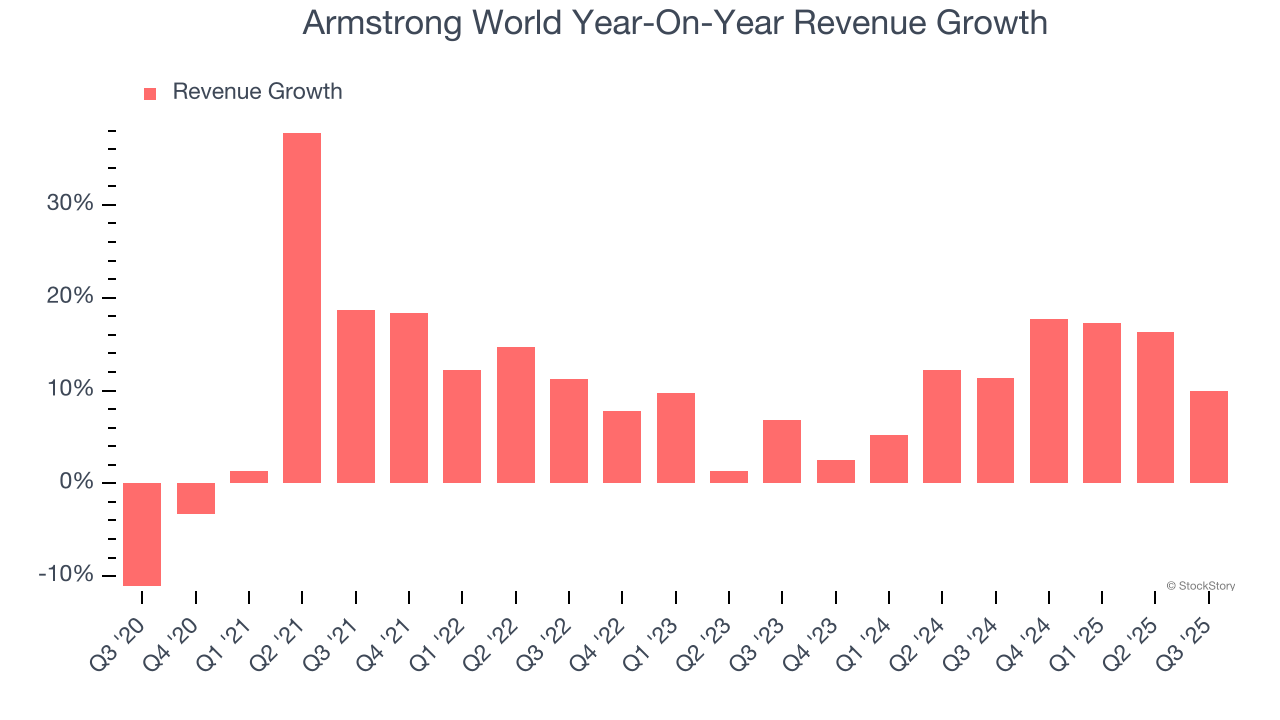
This quarter, Armstrong World reported year-on-year revenue growth of 10%, and its $425.2 million of revenue exceeded Wall Street’s estimates by 0.8%.
Looking ahead, sell-side analysts expect revenue to grow 6.2% over the next 12 months, a deceleration versus the last two years. This projection doesn't excite us and implies its products and services will see some demand headwinds. At least the company is tracking well in other measures of financial health.
Here at StockStory, we certainly understand the potential of thematic investing. Diverse winners from Microsoft (MSFT) to Alphabet (GOOG), Coca-Cola (KO) to Monster Beverage (MNST) could all have been identified as promising growth stories with a megatrend driving the growth. So, in that spirit, we’ve identified a relatively under-the-radar profitable growth stock benefiting from the rise of AI, available to you FREE via this link.
Operating Margin
Armstrong World has been a well-oiled machine over the last five years. It demonstrated elite profitability for an industrials business, boasting an average operating margin of 24.7%. This result isn’t surprising as its high gross margin gives it a favorable starting point.
Analyzing the trend in its profitability, Armstrong World’s operating margin rose by 2.9 percentage points over the last five years, as its sales growth gave it operating leverage.
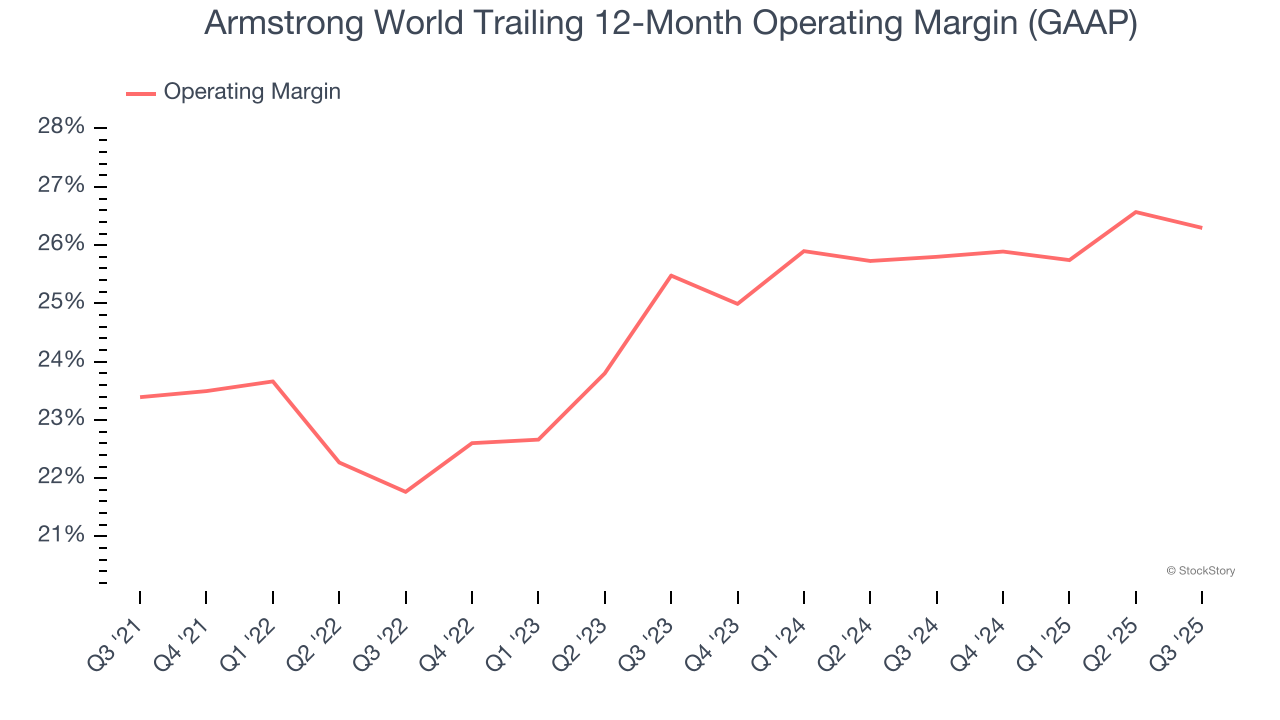
This quarter, Armstrong World generated an operating margin profit margin of 27.6%, down 1.2 percentage points year on year. Since Armstrong World’s operating margin decreased more than its gross margin, we can assume it was less efficient because expenses such as marketing, R&D, and administrative overhead increased.
Earnings Per Share
Revenue trends explain a company’s historical growth, but the long-term change in earnings per share (EPS) points to the profitability of that growth – for example, a company could inflate its sales through excessive spending on advertising and promotions.
Armstrong World’s remarkable 12.6% annual EPS growth over the last five years aligns with its revenue performance. This tells us its incremental sales were profitable.
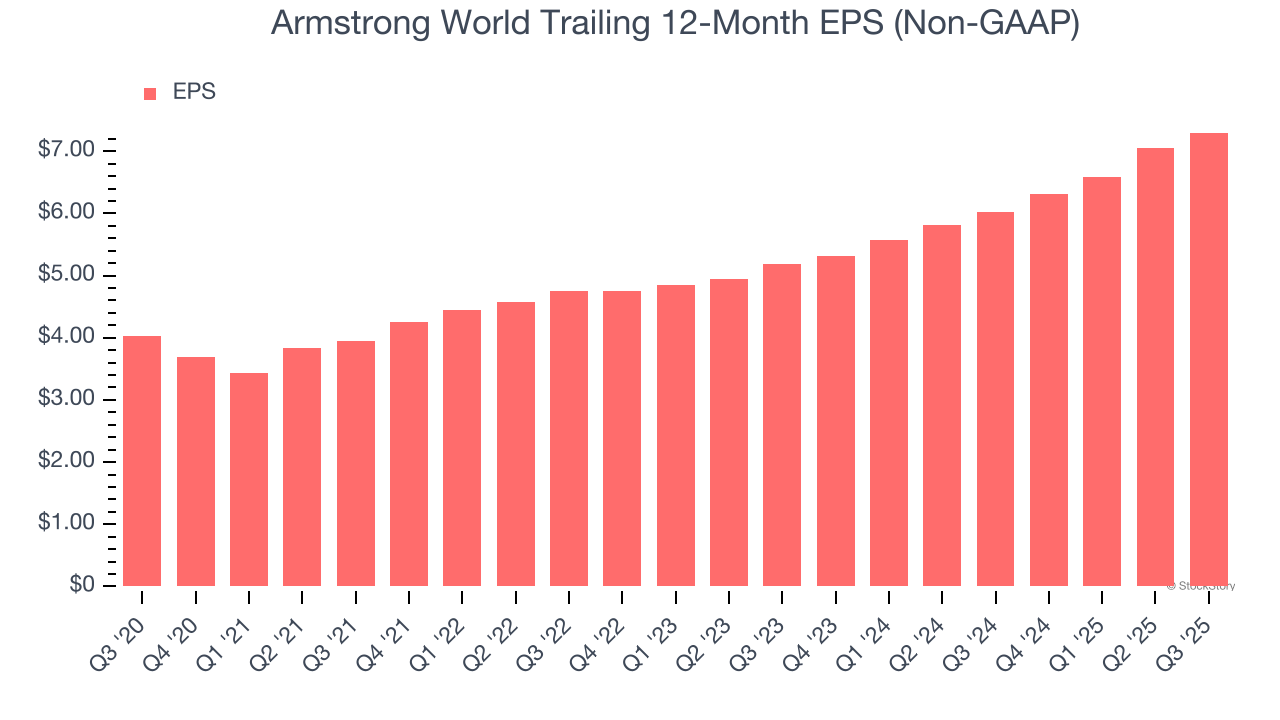
Like with revenue, we analyze EPS over a shorter period to see if we are missing a change in the business.
Armstrong World’s two-year annual EPS growth of 18.7% was fantastic and topped its 11.5% two-year revenue growth.
We can take a deeper look into Armstrong World’s earnings to better understand the drivers of its performance. A two-year view shows that Armstrong World has repurchased its stock, shrinking its share count by 2.2%. This tells us its EPS outperformed its revenue not because of increased operational efficiency but financial engineering, as buybacks boost per share earnings. 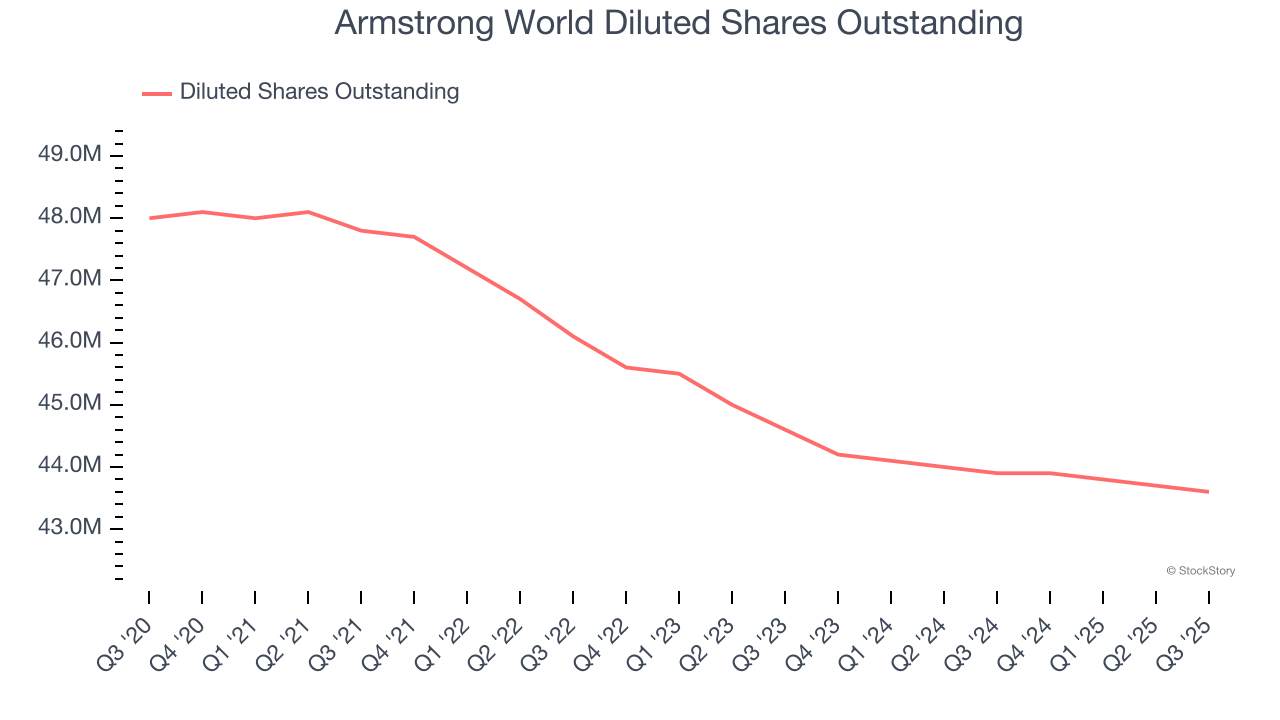
In Q3, Armstrong World reported adjusted EPS of $2.05, up from $1.81 in the same quarter last year. This print beat analysts’ estimates by 1.3%. Over the next 12 months, Wall Street expects Armstrong World’s full-year EPS of $7.30 to grow 10.3%.
Key Takeaways from Armstrong World’s Q3 Results
It was good to see Armstrong World narrowly top analysts’ revenue and EPS expectations this quarter. Full-year guidance was also raised. Overall, this was a solid quarter. The stock remained flat at $202.57 immediately following the results.
So do we think Armstrong World is an attractive buy at the current price? The latest quarter does matter, but not nearly as much as longer-term fundamentals and valuation, when deciding if the stock is a buy. We cover that in our actionable full research report which you can read here, it’s free for active Edge members.




